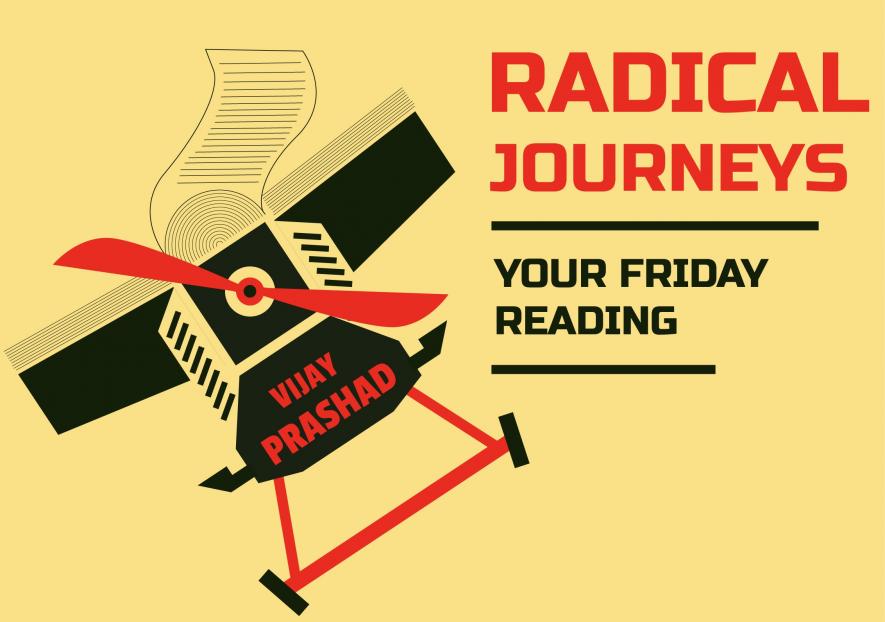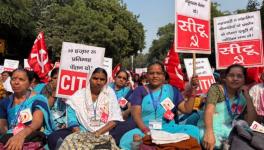India and the Left

In Hyderabad, the Communist Party of India (Marxist) recently concluded our 22ndParty Congress. We – the CPI (M) – are a democratic and centralist party. This means that we – the one million members of the CPI (M) – have robust debates inside the party about our understanding of the current reality and we develop our strategies and tactics based on that understanding. Different views exist within any party, indeed within any group of a million people. These differences are important and respected inside our ranks. But we have to agree to a united perspective if we are to act as a political party. It is this need for a common strategic understanding and its tactical implications that ‘centralisation’ is necessary.
Centralisation is a word that is commonly misunderstood. It is thought to signify the hammer – what the leadership says must be done. This is untrue. Centralisation is merely a word to describe the need for a common understanding, which we develop through a long process of discussion and debate, and for disciplined unity in action.
All political parties in the modern era have some version of centralisation, but not all of them are democratic. Most political parties are feudal in nature – where the political line is determined by party bosses or by those who inherit the party. These are not parties of a democratic type, even if they operate within the formal institutions of democracy. Many of these parties have strategic visions that are created by consultancy companies, who then present them to formal party gatherings as the ‘vision’ of the party.
Our Debate.
The CPI-M, in Hyderabad, in fact had a vibrant debate about the current social reality in India and whether that reality proposed certain important political alignments. The basis of the debate lay around how to view the RSS-driven BJP government and what to do about it.
There was no disagreement that the BJP , with its RSS core, is a ruthless one, that it has wrought havoc in Indian society and that it has systematically undermined one institution after the other (the new LeftWord volumeof speeches by CPI (M) leader and Kerala Chief Minister Pinarayi Vijayan shows the resolve of our party in fighting RSS fascism).
It should be known that the Left is not automatically sympathetic to many of these institutions, which have often acted against the people (including the judiciary, whose rulings on labour law ‘reform’ have not been pro-people at all). Nonetheless, the BJP’s undermining of democracy and these institutions is consistent with its approach to reconstruct India as a Hindu Rastra, as a majoritarian fascist paradise for the dominant castes to enjoy consumer capitalism.
The disagreement at the Party Congress lay in the strategy to defeat the BJP. Would it be worthwhile to electorally ally with the Congress Party, whose commitment to a neo-liberal policy slate is now complete? Would this not disorient the need to unify the working-class and peasantry, the key classes who have borne the brunt of the policies of the neoliberal policies of the Congress and the current BJP governments? Should the role of the Communist movement be to unite the Left and to unite the working-class and peasantry -- to recompose a Left in other words – that would give confidence to the people to widen our idea of democracy and justice?
These questions are the core of the dispute within the Left movement. Out of the Central Committee came two positions: the Central Committee’s draft of the political resolution – the main document of our Party Congress – and a minority positions that sought some changes in the Political Resolution. These positions represented two Left understandings of the strategic landscape of Indian politics. After discussion and debate, a consensus view was crafted that took the best of both approaches. The debate and the consensus strengthen the CPI (M) and offered a very good example of democratic centralism.
Recompose Working-Class and Peasant Strength.
What did the consensus view argue? It suggests that the task of the Left movement must be to build the independent strength of the working-class and the peasantry. One example of that has been seen in the Kisan Sabha mobilisations against the anti-peasant policies of this government. The Long March in Maharashtra is only the most recent of these mobilisations (for an excellent summary of that march, see the free LeftWord book, which can be downloaded here).
Across India, the Left is involved with the process of recomposing the strength of the working-class and the peasantry. It was, after all, the Left unions that took the initiative to organise one of the world’s largest strikes- of 180 million workers in September 2016. This strike took up the issues of the informal sector workers, the precariat (the precarious proletariat), who are demographically by far the largest sector of workers.
The recent victory by ASHA (social health) workers in Haryanais a consequence of the long-term work of CITU (Centre for Indian Trade Unions), of AIDWA (All-India Democratic Women’s Association), of SFI (Student Federation of India), DYFI (Democratic Youth Federation of India), AIKS (All-India Kisan Sabha) and the Khet Mazdoor Union. These are all mass fronts of the communist movement.
It is our consensus to build the confidence and strength of the working-class, the peasantry and the precarious workers, and also to build left unity. It is disorienting for the key classes to see fragments of the Left debate each other with such acrimony. Unity in action of the Left forces is an essential element of rebuilding our strength. The Kisan Long March was certainly led by the Kisan Sabha, but it was also led by the Bharatiya Shetkari Kamgar Paksha (Peasants and Workers Party of India).
The Left must ally with anti-BJP forces, even the Congress, in concrete struggles against the fascistic policies of this government. But the Left must not deliver the people to the Congress for its own anti-people agenda. One of the interesting features of the criticism of the Left, particularly the CPI (M), is that people ask, ‘why is the Left not joining with the Congress to fight the BJP.’ Why do they not ask the Congress Party the inverse question? Why not ask the Congress Party to reject its neo-liberal commitments and to move leftward? But such a rejection is not forthcoming.
In which case it is even more important for the Left to build the independent strength of the working-class and the peasantry, so that these key classes can determine the policy direction for India’s future. Otherwise the policy direction will be defined by consultants from McKinsey and what not.This is intolerable for the Indian people, half of whom do not know if they will eat on any given day. Half of the world’s hungry people live in India. That should be enough to galvanise sensitive and decent people to seek an alternative agenda for the country. That alternative agenda is being produced by popular struggles that imagine a different India, a socialist India.
Get the latest reports & analysis with people's perspective on Protests, movements & deep analytical videos, discussions of the current affairs in your Telegram app. Subscribe to NewsClick's Telegram channel & get Real-Time updates on stories, as they get published on our website.






















